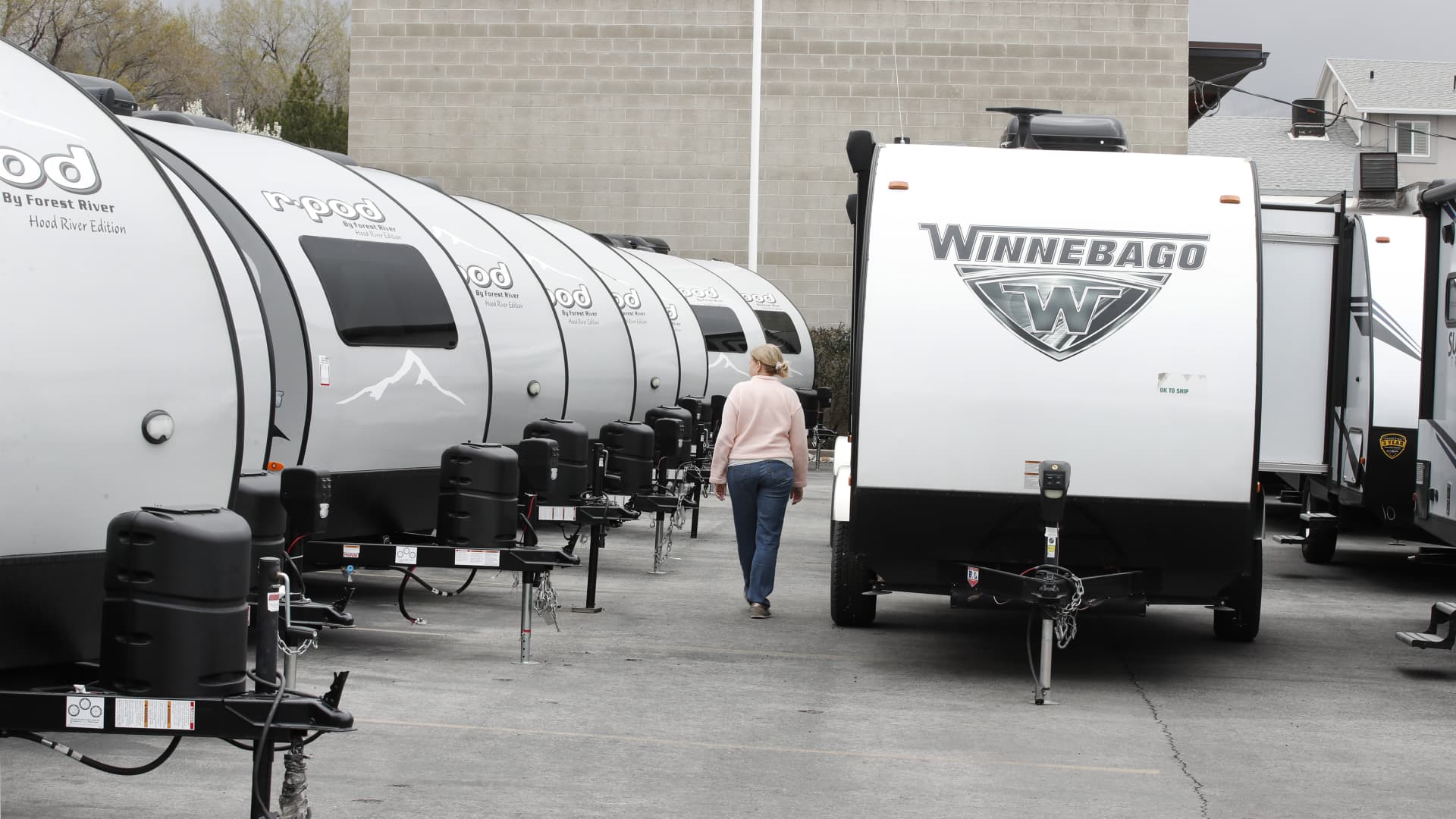
A Winnebago Industries Inc. travel trailer stands at Motor Sportsland RV dealership in Salt Lake City, Utah, U.S., on Monday, April 6, 2020.
George Frey | Bloomberg | Getty Images
Winnebago closed out its fiscal year with a solid fourth quarter earnings beat. Adjusted per-share profit of $1.59 easily topped Wall Street expectations thanks to the recreational-vehicle maker’s ability to efficiently manage costs, production and inventories in the quarter.
But that masked a big problem for the company – weaker discretionary spending. It’s a challenge across several sectors, from blue jeans to pizza delivery, as high inflation saps consumers.
The company on Wednesday also posted revenue of $771 million, a nearly 35% decline from a year ago. It fell short of Wall Street’s expected $784 million, as sales in its motorhome RV division significantly missed consensus views ($318 million vs. $355 million expected, according to StreetAccount).
Winnebago blamed “lower unit sales related to current market conditions and dealer efforts to reduce inventories, and higher discounts and allowances.” Unit deliveries of motorhome RVs plunged 52% year-over year.
Price increases weren’t nearly enough to overcome the weak demand.
CEO Michael Happe said “the consumer market continues to be challenged, and our fourth quarter results reflect a stubborn retail environment.”
While the company didn’t give financial guidance, Happe said he expects those trends to continue into the first half of the new fiscal year. By the second half of the fiscal year, though, Happe is optimistic that inventories will normalize and consumer demand will stabilize.
Winnebago’s stock, which was down 2% Wednesday, had fallen about 13% over the last three months, far underperforming the broader market. Rival Thor Industries had also fallen about 17% in that same timespan – a reflection of the challenging demand conditions across the industry.






